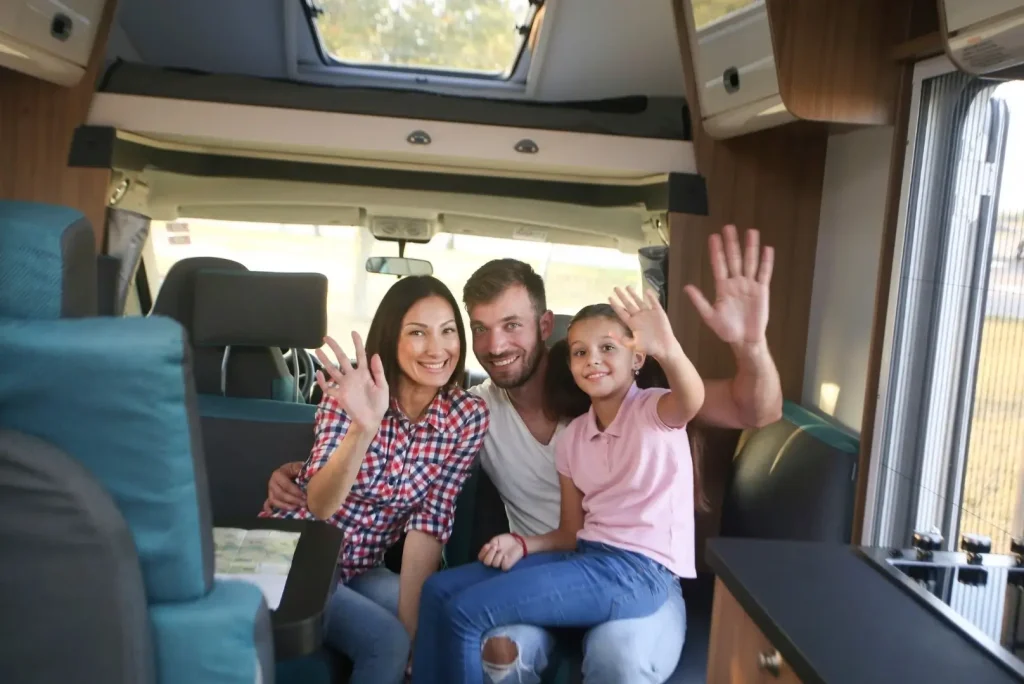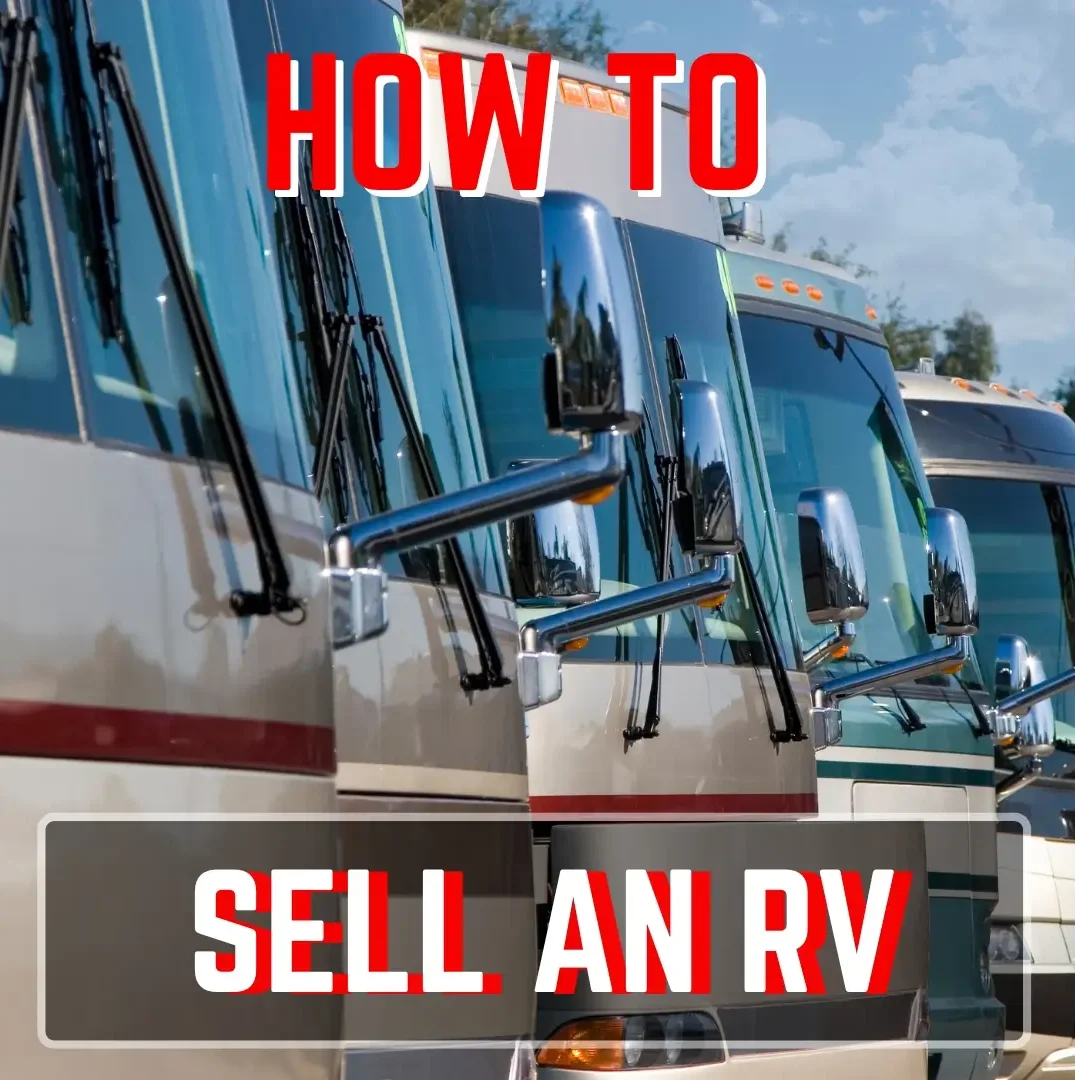Sad days, motorhomie. If you’re Googling how to sell an RV… Well…
That means it’s time to sell your RV. And those are sad days.
But maybe it’s not sad. Maybe it’s bittersweet. Maybe you’re upgrading your old motorhome and leveling up your road life to something more luxurious. Or maybe you’re finally leaving nomadism behind and setting up shop somewhere for good.
Either way, that means you need to know the best way to sell an RV!
Pricing, communications, coordinating logistics, writing listings… It’s a genuine headache. And if you do any of it suboptimally, chances are you’re not going to get the cash you deserve for your precious heirloom—the valiant steed that stood by your side on all those lonesome roads.
So let me, and the financial wiles of RV Properly, take the “ow” out of “how the hell do I even sell this thing”. (And put the “pro” back in “mad profit”!) There’s no need to manage all this admin by yourself alongside all the feelings. From top to bottom, this is a full-process guide for selling your RV, pre-loved and pre-loaded for the roads ahead.
Let’s get you the price you deserve!
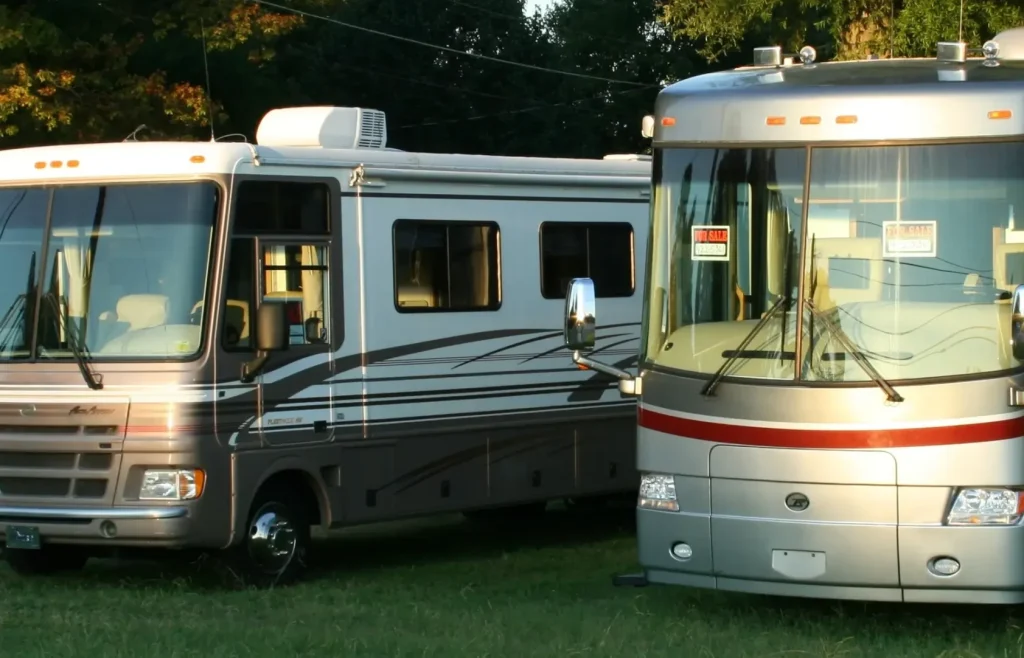
Source: Ildar Sagdejev (Wikimedia Commons)
First, Prepare Your RV for Sale
First impressions count! Hard. And in the RV world, that means a rig that’s clean, functional, and free of any weird smells you stopped noticing at month three of ownership. You might no longer smell it, but I guarantee the new owner will!
Start with a deep clean of your rig. This means everything. I’m talking floors, upholstery, ceiling vents, and all the forgotten nooks that tend to collect dog hair and granola crumbs. And don’t forget the outside—get your whole ride shiny and fresh.
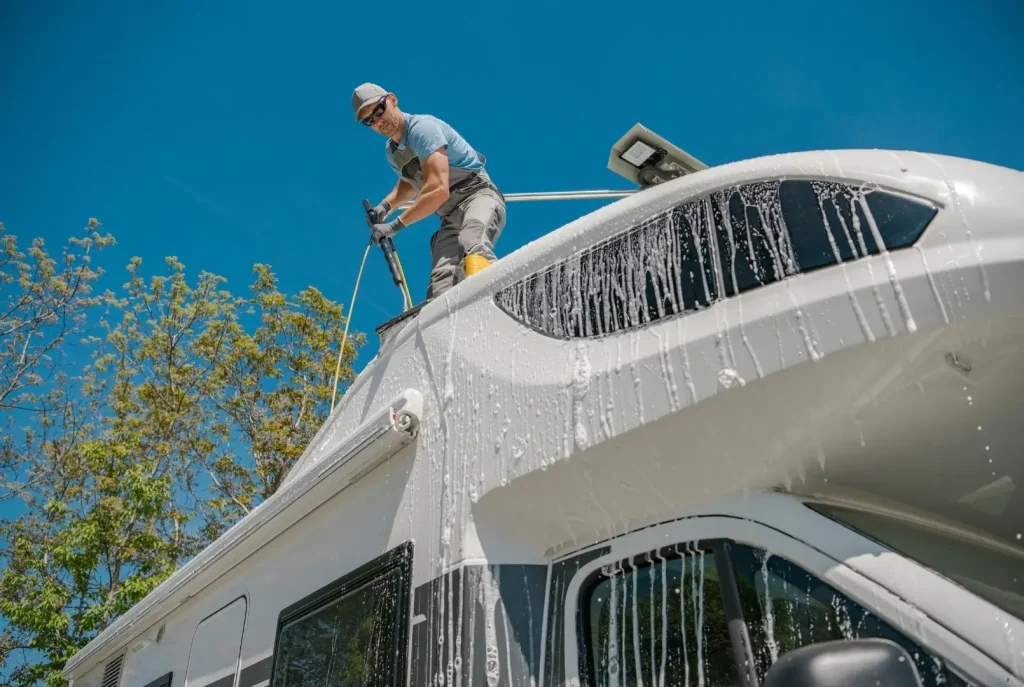
Next comes detailing your RV. Buff the outside, polish the windows, and give any chrome or trim a little extra shine. If you’ve got decals peeling as well, now’s the time to scrap them. I’d also recommend giving your RV’s exterior a full paint job. At the very least, give it a touch-up while also tending to any rust or cracks in the sealing.
Finally, you will need to tackle repairs—even the minor ones. Well, especially the minor ones. Try to eliminate all the little quirks of your home-on-the-go that result in you saying, “Oh, yeah, she’s just got some character.”
That one burner indicator light that never turns off? Fix it. The sticky slide-out that needs persuading? Oil it. That one cursed curtain rod you keep saying you’ll fix? You guessed it—if it’s broken, quirky, or “just needs a little jiggle,” it’s time to sort it out now!
And then, when you’re done, open everything up and air your rig out. Y’know… for the smell.
Don’t Forget to Collate All Your Paperwork!
A pretty RV will get buyers interested. But it’ll still be impossible to sell the damn thing if your admin isn’t sorted!
Make sure you’ve got everything a potential buyer will ask for—from inspection records to titles and ownership docs. Having it all on hand makes you look trustworthy and reduces the risk of the exchange for the buyer. Moreover, if someone rocks up, money in hand, you’re ready to sell!
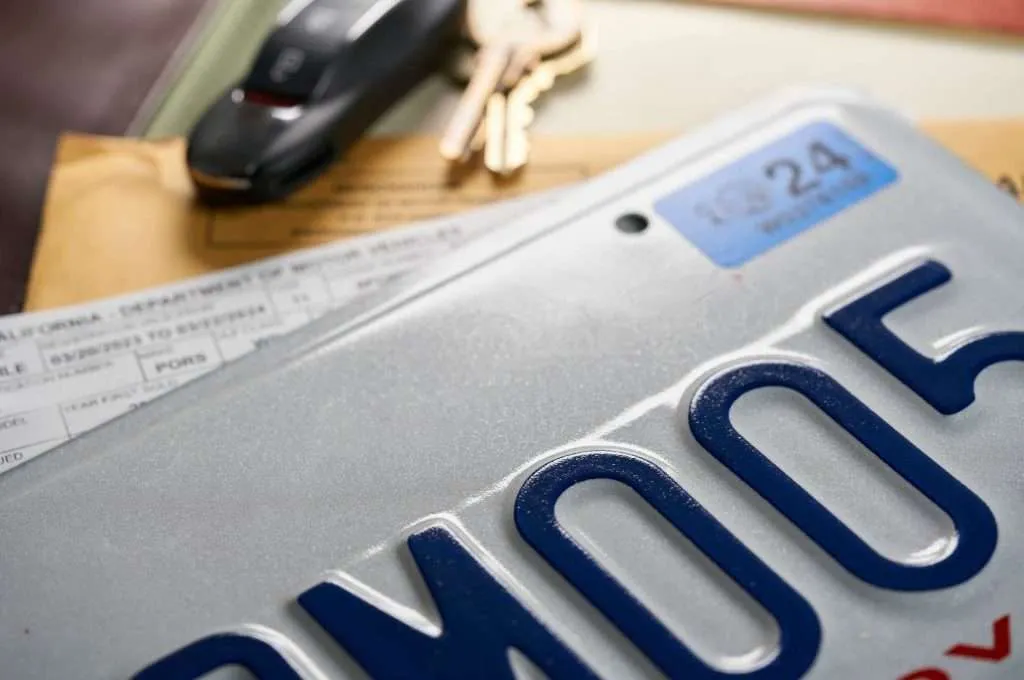
Here’s the paperwork sellers should have prepared:
- Vehicle title or proof of ownership
- Registration and any lien release documents
- Maintenance and repair records
- Appliance manuals and other manufacturer documents
- Any transferable services (e.g., an extended RV warranty or dedicated roadside assistance plan)
- Bill of sale template
Additionally, you can provide a vehicle history report (such as from RVChecks). In private party sales, this is realistically the buyer’s responsibility. But sellers who go above and beyond will only further aid the process.
Keep all your papers in a tidy folder, physical or digital. And then keep the pages organized with cute little color-coded tabs!
A type A rig and filing system might not sell your rig, but it will sell the optics.
Research and Set the Right Price for Selling Your RV
Knowing how to sell an RV is knowing how to price strategically. And THIS is part art, part science… and just a dash of ego management! For you, this is about more than just selling an RV: you’re letting go of years of memories, mods, and MacGyver-level improvements. But for the stranger buying your rig…
It’s just a vehicle sale. The price has to make sense on paper.
Start by checking what similar RVs are selling for on the market. Look at sites like RVTrader, RVT, or even Facebook Marketplace. Pay attention to the year, make, model, mileage, and condition of listed units. Don’t forget to filter by your address, either—regional pricing can vary rather wildly.

You’ll also need to consider the upgrades and add-ons you’ve added to your RV, as well as what’s included in the sale. A fully decked-out turnkey nomad-mobile complete with the little things (such as crockery, hoses, and tools) adds value. High-level gear like a functional solar system supporting a premium 12-volt RV aircon unit DEFINITELY adds value.
Buyers won’t pay the full cost for these things, but they will pay more. Plus, they definitely separate your listing from the pack. Ensure that you disclose these bonuses when advertising the RV, while also factoring depreciation into the pricing.
As for the final cost, once you’ve cross-examined with other listings for that reasonable selling range, shoot high. Set your price with forecasted wiggle room. Buyers will haggle—it’s part of the dance. So find the realistic range, pick your minimum sale figure, and then price higher to accommodate the haggle-off.
The right mindset is to aim fair, not emotional. It might feel like your legacy, but it is still just an RV.
So, Remember to Factor in Your Rig’s Depreciation!
The truth is that legacies depreciate in value. How’s that for existential lucidity in your RV selling guide!
RVs depreciate. Furthermore, all those top-shelf upgrades you purchased also depreciate. Unfortunately, it happens fast too!
On average…
- RVs lose 15–30% of their value in the first year.
- And go on to lose 35–50% total after five years.
It’s brutal. But it’s also reality. So here’s a quick formula to ballpark depreciation:
- Yearly loss = 10–15% of the original value, depending on the condition, mileage, and type.
Then, you just add the years together. Use this as a baseline when researching how much competitors sell their RVs for, and keep your price anchored in the real world.
Where to Sell Your RV
When considering how to sell your RV, you’ve got two main pathways:
- Private sale
- Third-party handled
Private selling gives you more control, and often more money overall as well. But it’s also a lot more effort.
Meanwhile, third-party sellers (like dealers, consignments, and auctions) can speed up the process and take the pressure off. But they’ll take a cut too.
Let’s assess the options!
Online Markets and Classified Ads
Personally, my advice is to sell privately IF you have the mental/emotional/logistical stamina for it. Used car salesmen haven’t exactly got glowing reputations in our shared social consciousness. Plus, getting more money from your RV’s sale means you can upgrade to something even more glamorous!
For many RVers, private selling is the go-to. Yes, of course, it’s more admin and effort. But these days, with the rise of so many hyper-accessible platforms for selling used RVs, it’s a lot more convenient than you might think!

You’ll be in the driver’s seat for the sale (hurhur). You get to call the shots on all communications and negotiations with buyers. But you’ll also have to manage the tire-kickers, time-wasters, and lowball lamewads. Plus, you’ll also have to answer A LOT of questions. (If you’ve ever sold a blender on Facebook Marketplace, just multiply the experience by fifty.)
Every platform functions differently, policy-wise. Some will charge a fee to list a used RV, while others instead offer premium tiers for more exposure. Ultimately, there are still some hoops to jump through. But if you’ve got decent photos, a strong write-up, and the time to spare, selling an RV privately often lands you the highest price.
So, for private selling, check out these platforms:
Dealers and Consignment Lots
Alternatively, selling through a dealer or consignment lot is the hands-off alternative. All you’ve got to do is hand over the keys—they’ll handle the marketing, talking, and test-driving.
With a dealer, you’ll most likely get a trade-in or direct buyout. It’s fast, allowing you to get your hands on the cash almost immediately, but you won’t get top dollar. You’re essentially selling your RV at the local pawn shop.
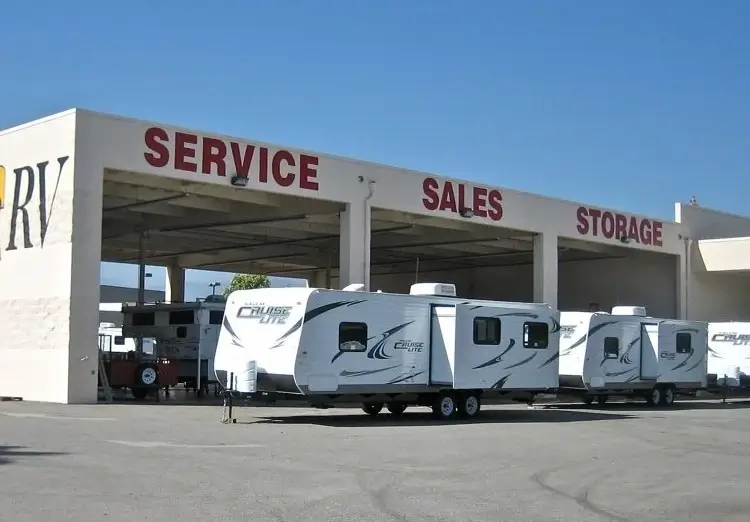
Source: iStock (Flickr)
Consignment lots are more of a middle ground. You still own the RV while they list and show it. It’ll be parked in their consignment lot after you’ve agreed to the fine print, and the lot’s operators then show your RV to any inspectors who come around looking for a good deal. This way, you split the final sale with them (usually a commission of around 10–15%) and net a decent return without the legwork.
Just make sure to read the fine print! Consignment agreements can have all kinds of terms hiding in the legalese, such as minimum listing periods, extra fees, or required maintenance work before listing. Depending on your affinity for terms and conditions, you may just be swapping one headache for another.
Or Try an RV Auction!
An auction is the wildcard option! If your rig has been sitting with barely a nibble and you just can’t explain why, an auction might be the nudge it needs.
RV auction platforms create urgency and attract cash-ready buyers… but it’s a gamble. Bidding can go high: it might also go low. Some auctions do have reserve pricing (a minimum sale price), but not all. As such, it’s crucial that you double-check the rules of the process before signing up, or you might just find yourself being paid for your legacy home in Dorito chips!
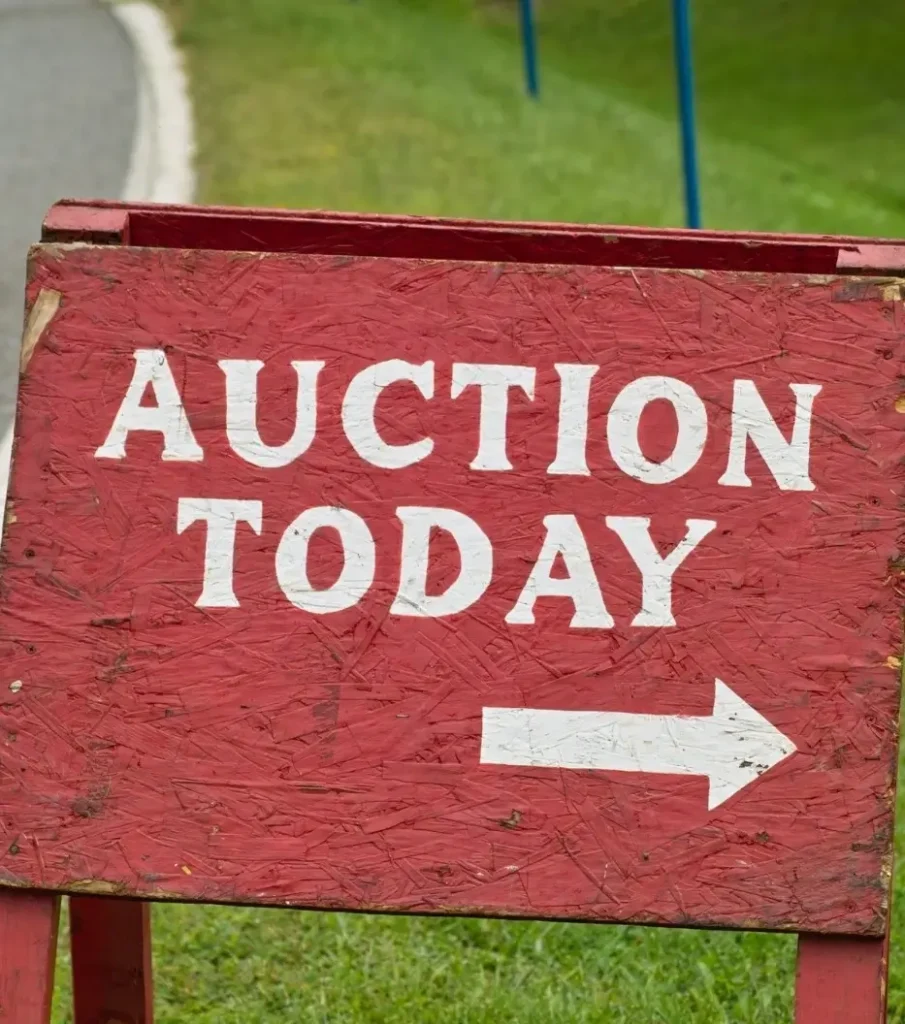
Oh! When you’re scouring the fine print, also remember to look out for listing and/or final value fee. Or possibly even transportation costs to the auction site. You need to factor all of this in when determining what the true final sale price effectively is.
Still, auctions can be a solid move. They’re an especially useful method for unusual rigs, fixer-uppers, or RVers looking to offload fast. A few popular auction sites include:
How to Market Your RV to Potential Buyers
Ok, let’s be real: most RV listings online are… bad. Blurry photos, zero details. No character with descriptions that read like you didn’t do your homework until the hour it was due. (And the homework was to write a legitimately impactful RV sale listing.)
Don’t be that seller.
I already said that first impressions matter. Well, a good listing IS your first impression—it should answer questions before they’re asked. It should paint a crystal clear picture of why your rig’s worth the asking price.
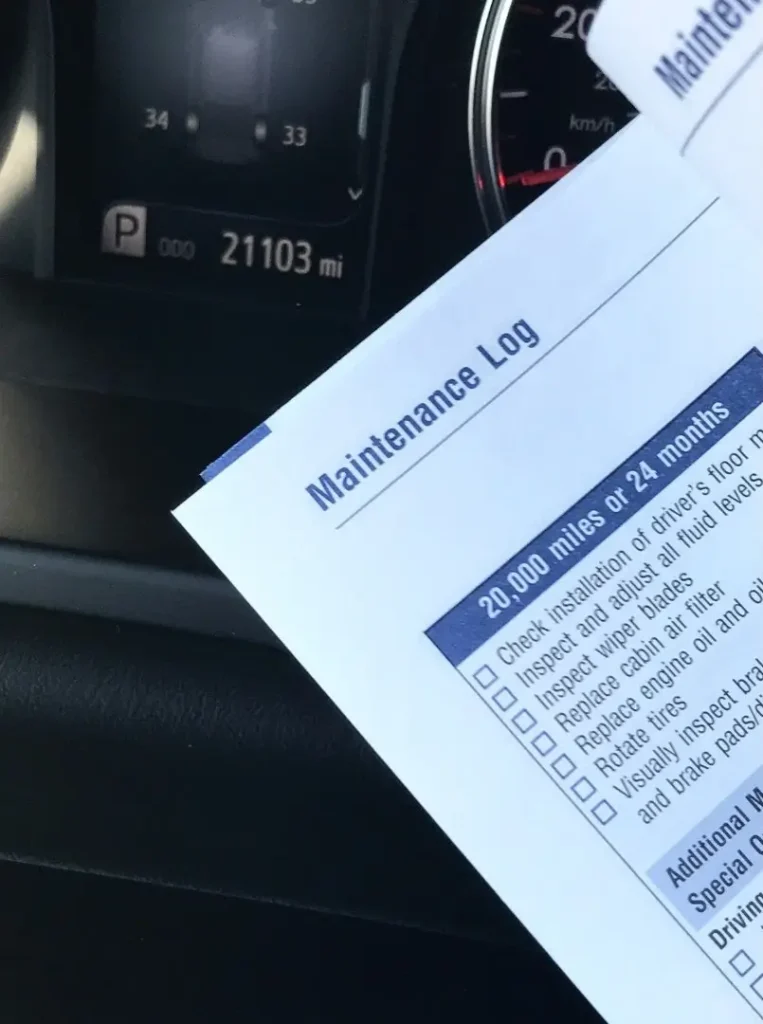
Make sure your listing includes details such as:
- Year, make, model, and exact trim
- Mileage and engine hours
- The layout and number of beds (don’t force buyers to go searching for extended info in the discovery phase)
- Key features (solar, slide-outs, tank sizes, etc.)
- All upgrades or modifications you’ve added
- Maintenance and repair history (or at least an invitation to see them at request)
- Your reason for selling (yes, this builds trust!)
- What specifically is included in the sale, from the most essential RV gear to all the extras
- Your contact preferences and location for viewing
Write a listing, and write it sexy using basic copywriting techniques. Use short, concise paragraphs; use bullet lists and subheadings. Even smart usage of emojis can make your listing stand out. Prioritize scannability for the Orwellian-esque attention economy we’ve landed in
And, don’t just post and ghost—share dat shizz! Hit up RV Facebook groups, local marketplaces, RV-specific subreddits, and forums like iRV2. You can even ask friends to share it around or broaden your reach to nomad-focused groups.
Knowing how to sell an RV is, unfortunately, equal parts knowing how to market one.
Ensure You Ace the Photos and Videos
A clean RV with crap photos still looks like crap. Your listing’s media will 100% make or break your sale.
Now, you do not need professional photography gear. In fact, modern-day smartphones are so loaded with post-production software that you’ll struggle to take a bad photo with one. (But then… you’d be surprised.)
Tip #1: take pictures in daylight. Softer morning or evening light will capture better overall. A couple of golden hour shots will also pop off, but not ALL golden hour or your listing will start to look like a stock photography photoshoot.
Next, stage the shot. Clear out those dirty socks and cereal bowls. Open the blinds, maximize natural light, and set the vibe.
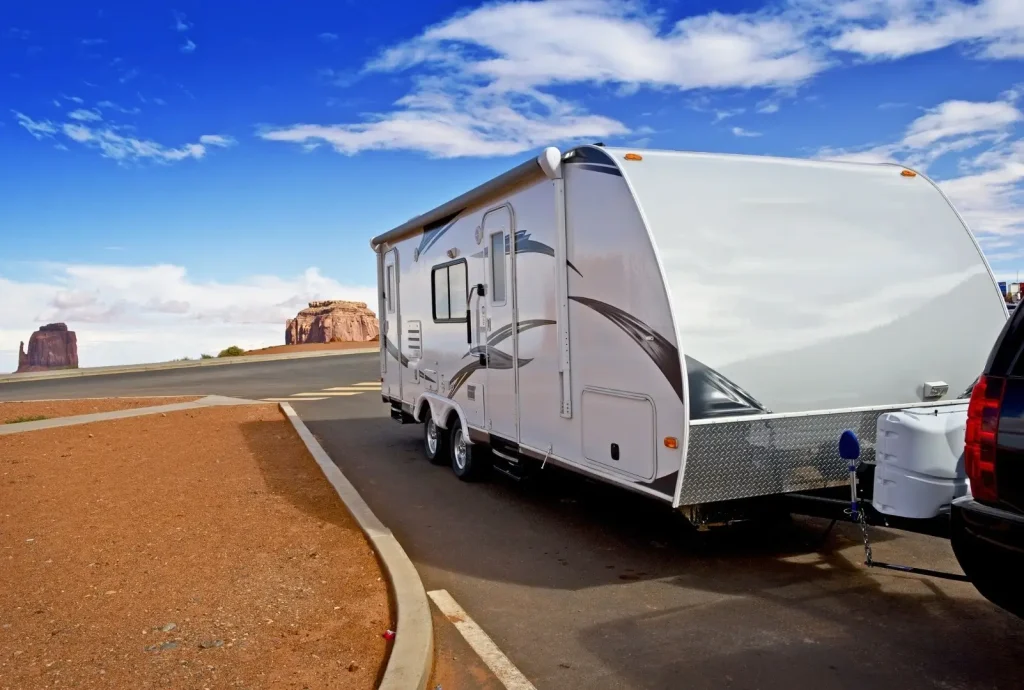
After that, play around with orientation and angles. Variety is another massive win for RV listings. Some aspects of your rig will look better with wide shots, some will glow up more in vertical shots (e.g., narrow bathroom spaces), and your favorite features deserve close-ups as well. There are plenty of guides and tips for photographing your RV out there, and if you need more, steal a few ideas from realtors and Airbnb managers!
As a final note, here are some types of media to consider for your listing:
- Lots of product shots
- Photos of consumer pain points (for example, close-ups of high-wear-and-tear areas)
- 360° interior photos (use your phone with a tripod + pano mode)
- A full video walkthrough (talk through features as you walk)
- Showing the engine running, slides moving, etc.
- A couple of “in action” camping shots (for inspo)
- And including yourself in some of the photos or videos to humanize the listing (in moderation—it’s not a dating profile!)
Remember: you’re not just selling an RV. You’re selling a lifestyle. Show it off.
Managing Buyer Inquiries and Inspections
Yup—you’ve got to handle customer service duties too… Why do you think some people prefer third-party sellers?
First up, prepare your calming diaphragm breaths: buyers will behave exactly as you would expect them to. They’ll message at all hours. They’ll ask painfully obvious questions. They’ll ghost like they’re in competition with the concept of love in the 21st century!
So stay polite. But also protect your time (and peace).
Field initial low-effort inquiries (e.g., “Is this still available?”) with similar low-energy responses (i.e., “Yes :)”).
If someone increases they’re interest, you can increase your input AND vetting correspondingly. Mirror their energy, but also ask intelligent questions. Why bother telling someone all the top-rated RVing gadgets your rig comes loaded with if they won’t even tell you what state they’re based in?
When someone seems genuinely serious, offer a phone call to feel them out. A lot of serious buyers will appreciate the offer. (Not all though—some, like myself, might prefer messaging and papertrails.)
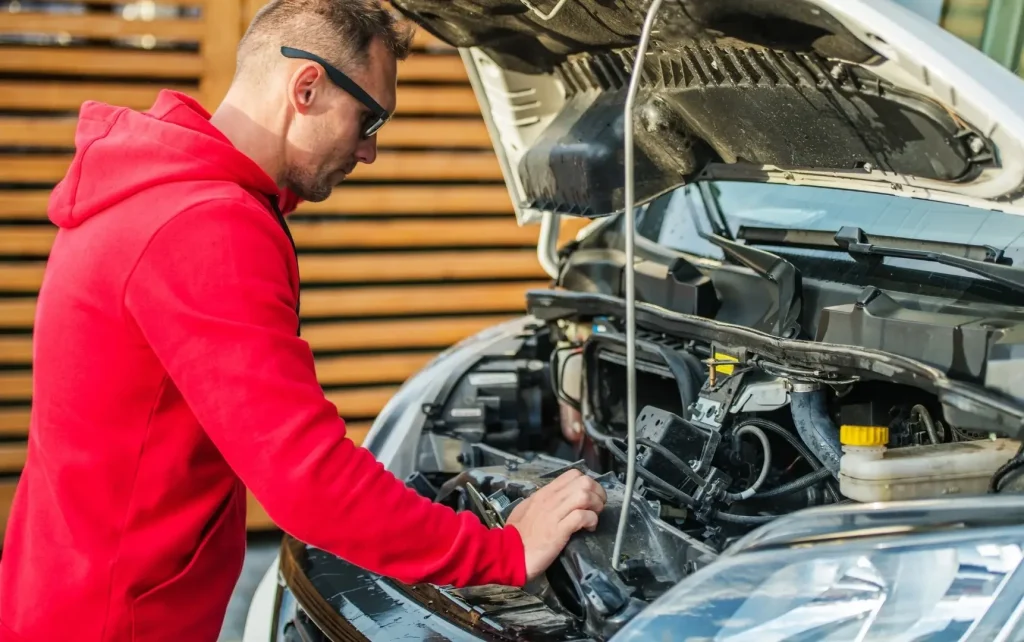
All in all, intuiting time-wasters from everyone else is a bit of an art form. Some people are just bad at digital communication and can come off quite poorly despite being very interested. As a general rule, I’d say give people enough of the benefit of the doubt to establish whether they’re halfway-serious but never so much that you feel like you’re overextending yourself and burning out on the process.
Finally, inspections and test drives should always be scheduled ahead of time. Be present, but give space. If the inspector wants a mechanic’s opinion, that’s more than fair and should definitely be facilitated. For test drives, verify their license and insurance first, and never let them borrow the keys unsupervised.
Above all, you’re aiming for firm but friendly. You might be selling a high-ticket item, but in terms of managing the masses, the experience isn’t much different from selling a lawnmower.
Handling Negotiations on the Sale Price
And the, of course, grab yo’ haggling hat! Negotiation is part of the game—expect it, prep for it, and don’t take it personally.
As already discussed, your asking price should include your wiggle room. Then, when buyers make an offer, counter instead of caving, even if it’s close. Keep a few aces out of the listing and up your sleeve to sweeten the pot. Throw in those extras instead of lowering the price—something like:
“Listen, I can’t do $360k; unfortunately, $365k is my absolute lowest. But tell you what, if you can do that price, I’ll let you keep the RV-tailored GPS system I had installed. It’s a Garmin. I was going to keep it for my new RV, but it’s already set up for this rig, so you may as well hold onto it…”

This WORKS. Use what you can to your advantage, and if someone lowballs in bad faith, don’t waste your breath. Just say, “I’ve got better offers—thanks anyway.”
The key is knowing your minimum and staying calm. Anything short of that is a no-sale anyway. Make the buyer feel like they’re getting a win—you’ll be the one smiling when the deal’s done.
Finalizing the RV Selling Process
So you know how to sell an RV and have just successfully sealed the deal! Now it’s time to handle the boring-but-critical admin. Keep things legal and tidy, and you’ll keep the banks and credit unions happy.
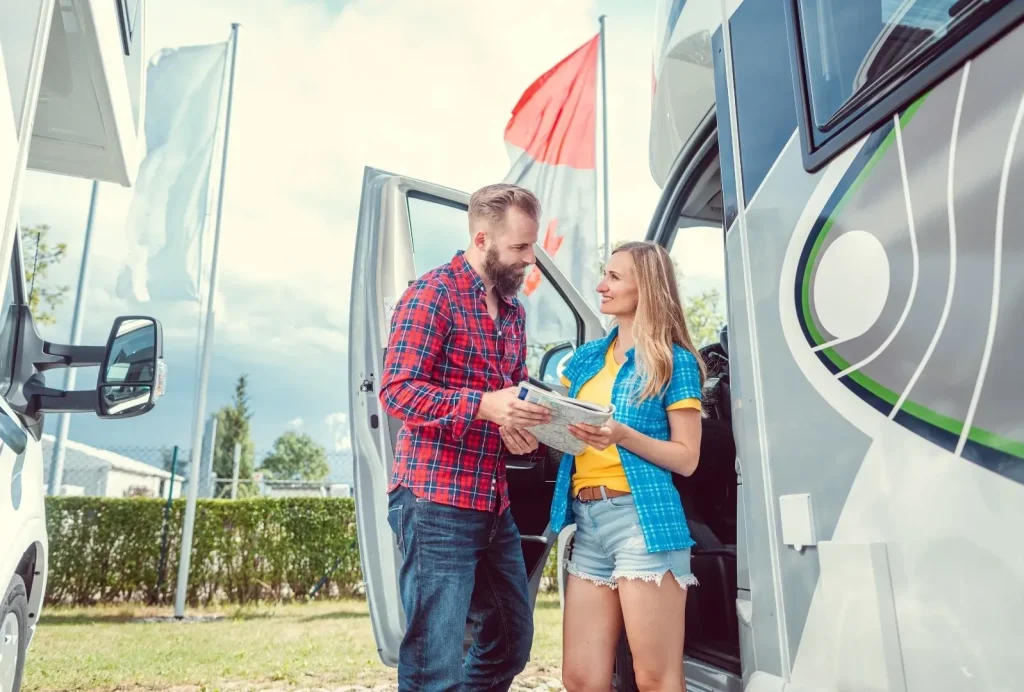
Here’s a checklist to follow for payment processes:
- Agree on a secure payment method. Cash, cashier’s check, or wire transfer are the safest methods. Avoid personal checks or payment apps unless you absolutely trust the buyer.
- Write up a bill of sale. Include names, the date, the sale price, the VIN, and “sold as-is” language. Both parties should sign it and keep copies.
- Transfer the title. You’ll usually sign the title over to the buyer, and they’ll register it in their name. Check your local DMV’s website for specifics—the exact processes vary from state to state.
- Complete a release of liability. This protects you if the buyer racks up tickets or crashes after they’ve purchased the RV but before officially registering it in their name.
- Cancel your insurance. Once the RV is no longer in your name, call your insurer and shut it down. Furthermore, cancel any roadside assistance services or extended RV warranty or service plans as well, provided they weren’t also being transferred.
- Remove registration plates, if required. In some states, the plates stay with the seller. In other states, they transfer with the RV. Confirm this one locally too.
If done right, this process should only take a day or two max. It’s annoying, but it gets you to the final step…
Now the Money Has Landed in Your Bank Account!
The ‘final step’ being cha-ching! HOWEVER, before you pop the champagne, there is one more thing…
Don’t forget about Salivating Uncle Sam (or your equivalent tax authority). No two private citizens may operate a private sale of used goods in the privacy of their own homes without the public state getting a cut!

Depending on where you live and how much money the sale has generated for you, you possibly owe taxes on the sale. Most of the time, tax responsibilities will fall on the buyer, but it’s always worth checking. Especially if you flipped your RV for a clear profit.
While you will probably be unaffected as the seller, it’s worth checking in with an accountant or tax pro. Even something like previously living in your RV full-time as a primary residence can subtly tweak your responsibilities.
Losing a chunk of your carefully priced sale to a surprise Notice of Deficiency later down the line isn’t fun for anyone. (Well, except Uncle Sam.)
FAQs About Selling RVs
And that’s the guide. By now, a big fat payday is hopefully on its way!
Selling an RV comes with a learning curve. Hell, selling an RV can come with just as many questions as buying one, especially if it’s your first rodeo.
So to wrap up, let’s break down the most common questions. Then you can get to pricing, listing, and selling your rig, all on the way to that fat payday.
Where is the best place to sell a used RV?
For most private sellers, niche online marketplaces like RVTrader and RVT.com are the best options. Supplement this with more generalized platforms like Facebook Marketplace and Craigslist for the best reach and flexibility. You’ll get the highest potential return, especially with a well-produced listing.
However, if you’re short on time or energy, consignment lots or dealers may be a better pick. They’ll handle marketing, inquiries, and paperwork in exchange for a cut. Just be sure to check reviews, fees, and contract terms before committing to using any third-party seller.
What is the best time of year to sell an RV?
The data is in: spring through early summer is hands-down the best time to sell an RV. That’s when buyers are planning road trips and prepping for camping season, so demand spikes—as do your odds of getting a great price!
Late fall and the winter months are slower for business. Many buyers aren’t thinking about travel, and fewer people want to buy an RV only to immediately winterize it for the off-season. If you do list outside of the peak months, you can expect more negotiating and a longer time sitting on the market, unless you price aggressively or have a highly desirable model.
What is the safest form of payment when selling an RV?
The safest payment options for buying and selling used RVs are:
- Cash (in person)
- Bank wire transfers
- Certified cashier’s checks
If you accept a cashier’s check, always verify it before handing over keys or documents. Meet the buyer at their bank so you can confirm its legitimacy. For wire transfers, wait until the funds fully clear in your account.
Lastly, never accept personal checks or use peer-to-peer apps like Venmo, PayPal, or Zelle for large transactions and RV sales. They’re not built for it and offer insufficient fraud protection.
What is the expected value of an RV?
RV values drop fast—typically 15–30% in the first year, and around 50% after five years. To estimate your RV’s resale value, run some rough calculations:
- Start with the original price.
- Subtract 15–30% from that figure for Year 1. (Say ~25% for a balanced estimate.)
- For each subsequent year, subtract 10–15% of the current depreciated value (not the original price).
- Add value back for any major upgrades (e.g., solar systems or premium appliances).
- Factor in your RV’s class and type—different categories have different resale values.
Condition, mileage, maintenance records, and even location can also sway the final price. Do your best with depreciation calculations, and then scour the market for similar listings and competitive pricing.
